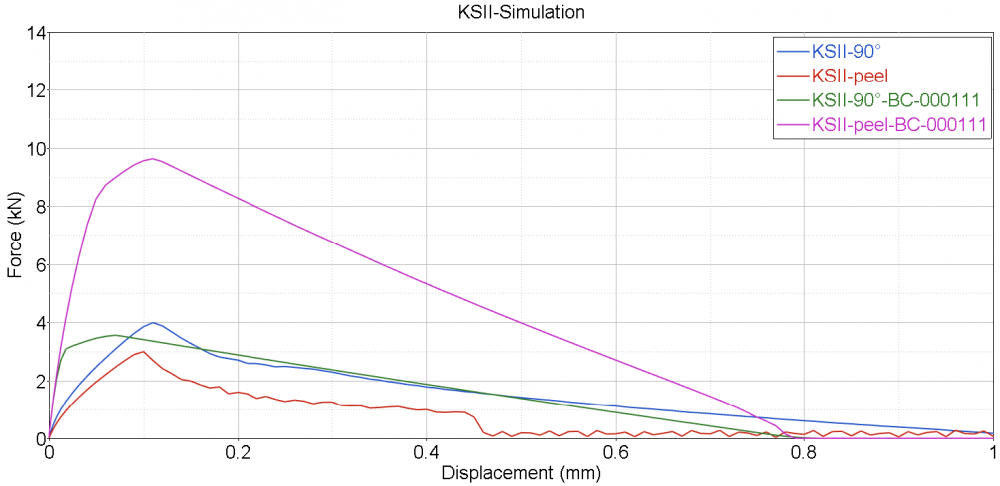Hi,
I am working with radioss solver for adhesive modelling.
Material model MAT/LAW83:
Alpha: -100
Beta: 1
SN connect Failure model:
Fct_0N:4 , Fct_0S:7, Fct_FN:90, Fct_FS:16
Alpha_0 : 50, Alpha_F : 50, Beta_0_F:2
The force vs. displacement graphs when working with KSII-90° and KSII-peel simulation models is showing a significant variation in output.
Please find the graph attached, BC -000111 artificially applied to cohesive element nodes.
The observed graph with BCs are similar to my experimentation results, does that mean I need to always apply BC 000111 to cohesive elements?
Any explanation on why this is happening, could be of great help.
Regards,
Chaitanya
Master's student
<?xml version="1.0" encoding="UTF-8"?>